Notes: Vision
PDFWhere we are going:
How is a distorted and upside-down 2-D retinal image transformed into the 3-D world we perceive?
Light
No species can see in the dark, but some are capable of seeing when there is little lightLight can be thought of as
- Particles of energy (photons)
- Waves of electromagnetic radiation (has a wavelength)
Humans see light between 380-760 nanometers in wavelength
Properties of light:
________________ – perception of color
________________ – perception of brightness
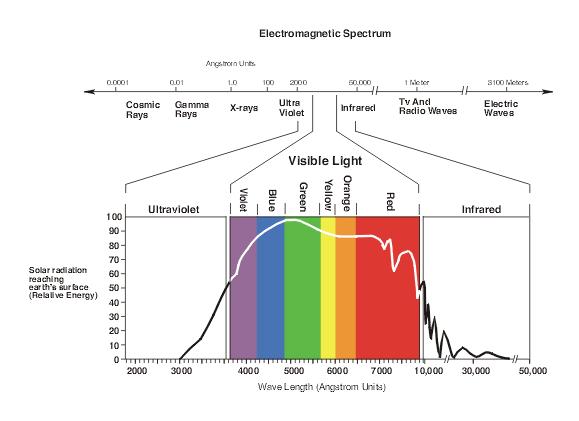
Source: http://www.perret-optic.ch/optometrie/Vision_des_couleurs/vis-couleur_gb.htm
The Eye
Focusing an image
______________ - contractions of ciliary muscles to deform the lens and change the focus
Retina
Transduction
transduction - conversion of one form of energy into another
visual transduction - turning _____________ into a _____________
_____________
how does this happen: pigment absorb photons and react
Rods & Cones
________________________ - cells specialized for visual transductionrods - specialized for seeing ________________________
more sensitive to photons than cones
signals from many rods are pooled into one retinal ganglion cell
cones - specialized for seeing________________________ (more later)
in most humans, there are 3 different cones sensitive to 3 different wavelengths of light
|
|
 |
Rhodopsin - a ______________ that changes shape when it absorbs ______________
(you won't be tested on cyclic GMP, just rhodopsin in general:)
cyclic GMP keeps sodium channels open
when rhodopsin absorbs light, it breaks up cyclic GMP
when light hits rhodopsin, this:
increases/decreases the amount of Na+ entering the cell
depolarizes/hyperpolarizes the cell
increases/decreases glutamate release
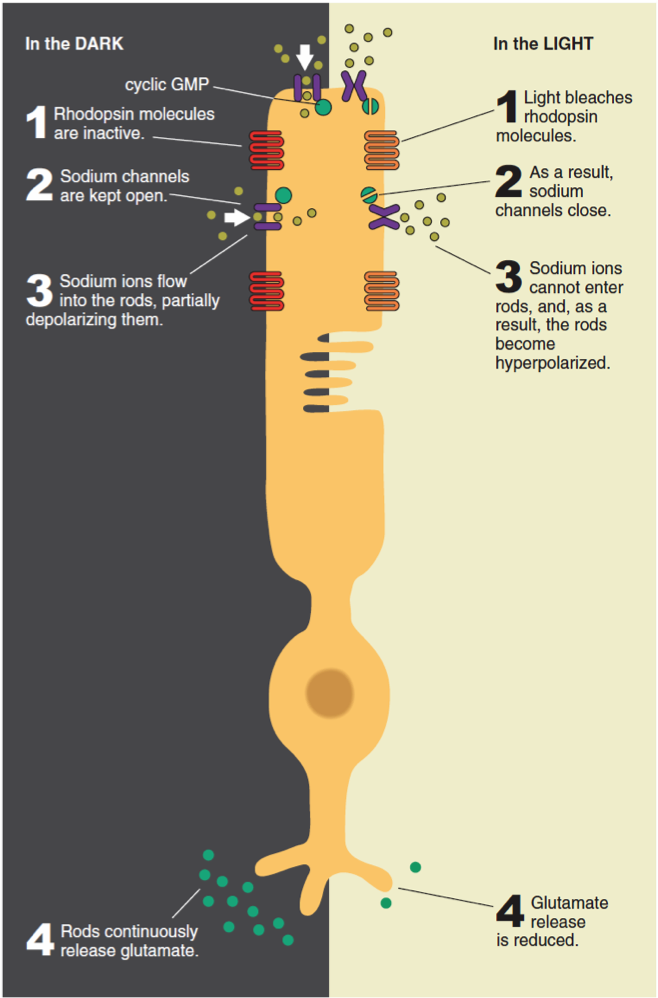 |
Rhodopsin: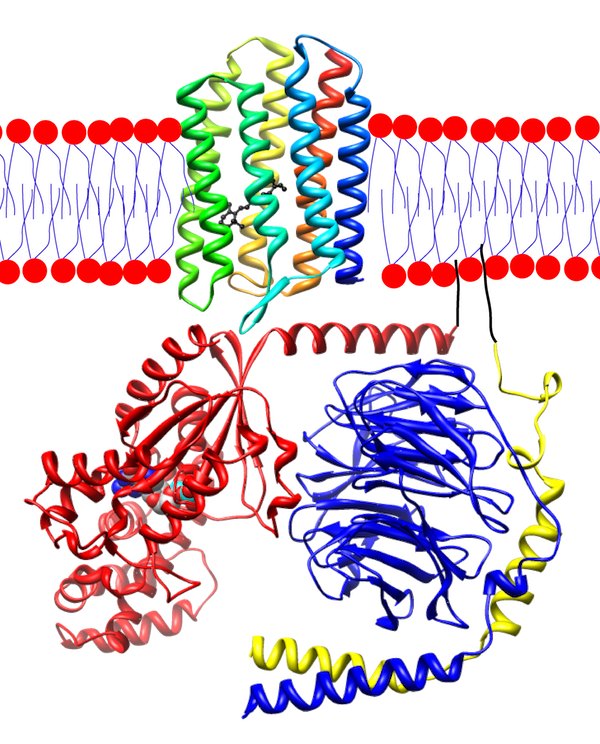 Source: wikipedia.org/wiki/Rhodopsin |
_________________ - the ability to see when light is dim, requires _________________ photoreceptors
_________________ - the ability to see details (resolution), requires ________________ photoreceptors
_________________ - the center of the retina
where the lens focuses the image
a high/low concentration of cones
a high/low concentration of rods
_________________ - the area of the retina where the axons from the retinal ganglion cells leave the eye
Trick for seeing in the dark - don't look directly at what you want to see.
Why does this work?
Visual pathway
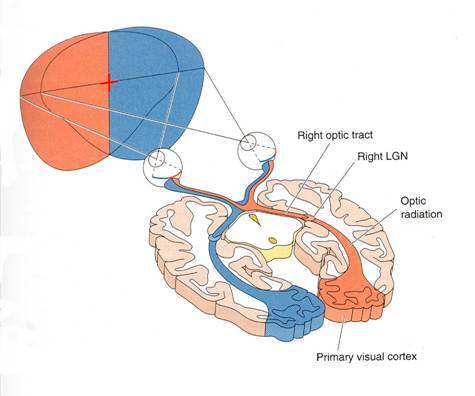
Source: http://www.dgward.com/physo101/sm06_pages/labs/Peripheral%20Vision%20and%20Visual%20Pathways.htm
Lateral geniculate nucleus (LGN)
- part of the thalamus, which is a relay station between most sense systems and the cortex
- exact role is unclear
- maybe involved in: making visual information more efficient, focusing attention, saccades
Visual cortex (more later)
- performs the processing on visual information to allow us to perceive visual scenes/stimuli
Information from LEFT visual field goes to RIGHT visual cortex (and vice versa)
NOT left EYE to right visual cortex
Retinotopic mapping
- If two retinal ganglion cells that are close together in the retina, their axons end close together in the visual cortex
- The retina is "mapped on" to the cortex
Low-level Visual Processing
"low-level" refers to early in the visual pathway & dealing
with simple visual stimuli like brightness, edges & color.
"high-level" refers be areas that receive the pre-processed
information from low-level parts of the visual system and that
process more advanced stimuli like motion, faces,
object-recognition & visual space
Receptive Fields
Definition: The area of visual space that stimulates or inhibits a neuron (or neural tissue)
The stimulus might be simple or complex. Examples:
- Some neurons might be stimulated by any light in a
precise spot in the top right corner of the visual field
- Some neurons might be stimulated by a vertical edge
anywhere on the left
- Some neurons might be stimulated by faces anywhere in
the visual field
Receptive fields become larger
farther away from the fovea - don't need to
know exact location, just want to notice something
at higher levels of the visual system - just
want to react to a face (for example), doesn't matter where it
is
Hubel & Weisel
Videos: Intro
& long
version
Color
In most humans, there are three kinds of cones- each with a different photo-sensitive pigment called iodopsins
- each of the three iodopsins is sensitive to different wavelengths of light
Number of cones varies
- some animals & people (with color blindness) have only 2 kinds of cones
- some animals (birds in particular) have 4 kinds of cones

High-level Visual Processing
Sensation vs PerceptionIncoming signal
- left/right visual fields to different hemispheres
- each hemisphere contains intermingling cells that respond to left and right eye
- retinotopically organized
- no perceptual processing (still basically "pixels")
Visual cortex
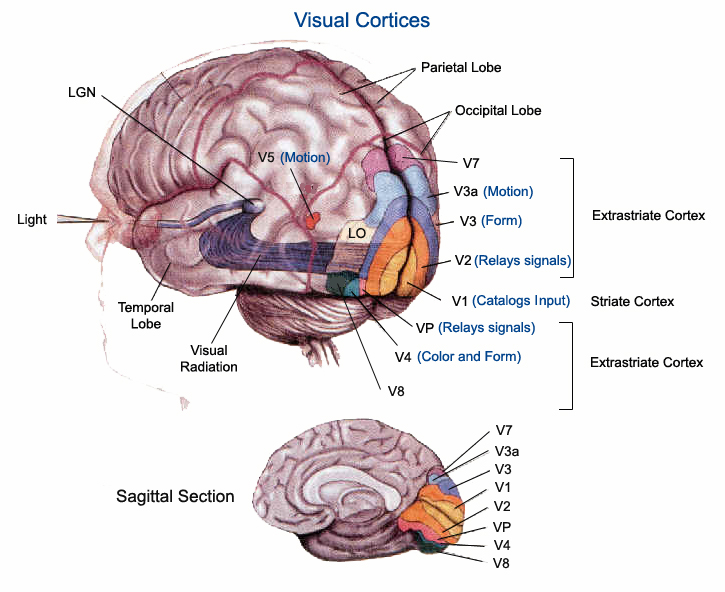
Source: http://www.techcyn.com/feature.php?id=f2&issue=1
______________ cortex - stripped appearance
primary visual cortex (striate) -> parastriate -> prestriate/extrastriate -> temporal lobe
increasingly complex processing
Dorsal vs Ventral stream
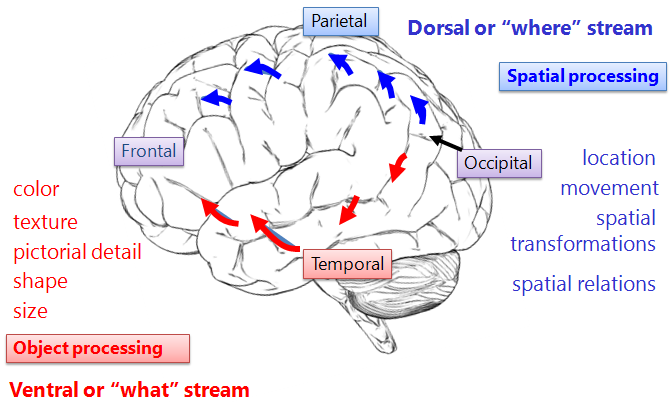
| Ventral/what stream - Used for recognition/identification - Captures fine details but is slow - Conscious awareness and interactions with long term memories. - Notices fine details (fovea) - Neurons respond to objects anywhere in the visual field |
Dorsal/what stream - Used for visually guided behavior - Sensitive to motion, fast processing - Not conscious processing - Neurons respond based on where visual attention is allocated |
Face recognition
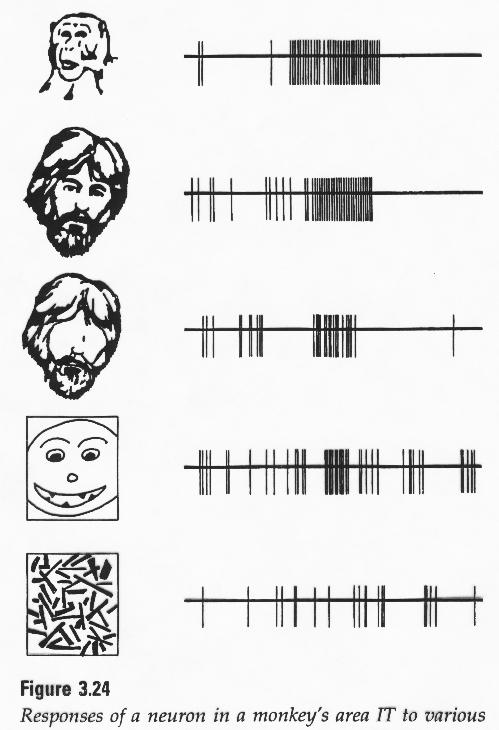 |
Fusiform Face Area - in ventral stream / temporal lobe - somewhat right lateralized - particularly active to faces, though somewhat to objects in general - example of extreme specialization in the visual system |
Principles of Visual Processing
- Parallel processing
- Hierarchical
- Functionally segregated
